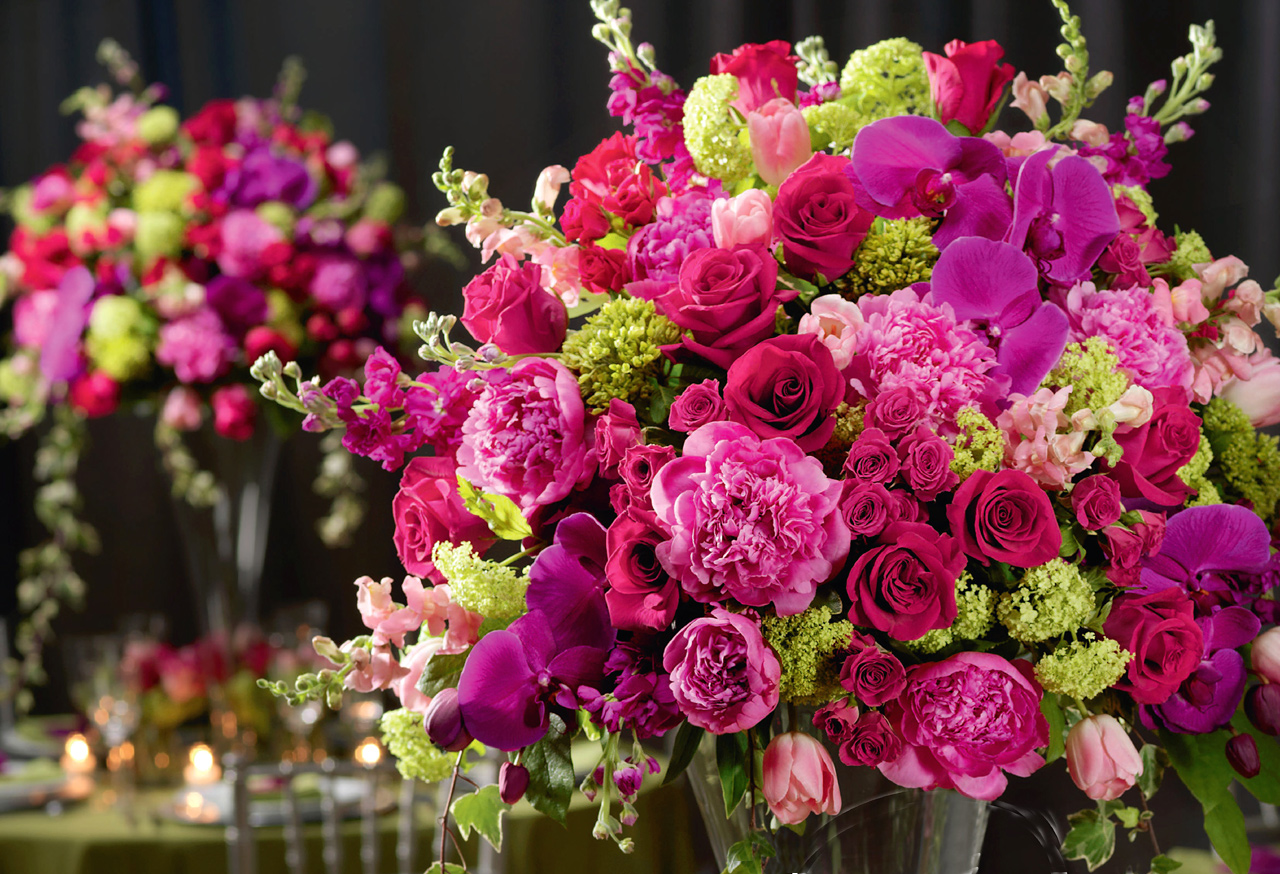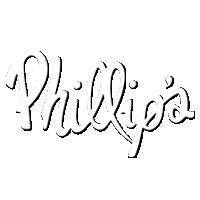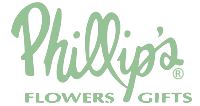About Floral Designers, Floral Design Styles, and Design Elements

Flower Designer
A flower designer, or floral designer, is a professional who creates flower arrangements, bouquets, and other decorations for various occasions and particularly for special events, such as weddings, receptions, galas, and other large gatherings. Most flower designers work with fresh flowers, foliages, and other floral elements. Some also work with silk flowers, dried flowers, botanicals, plants, and even balloons. Regardless of the materials used, floral designers are experts at envisioning and creating beautiful floral compositions for a variety of settings, occasions, and uses. Many offer the following services as part of the artistic process, as well.
Consultation: Flower designers often meet with clients in person to discuss needs, preferences, and event requirements. They gather information about the occasion, color schemes, themes, and any specific requests or budget considerations. They also advise clients on options, flower availability, venue requirements, and how to maximize impact and value.
Design Concept Development: Based on the client's preferences and their own creative vision, flower designers conceptualize and develop design ideas for floral arrangements. They consider factors such as flower types, color combinations, texture, size, shape, and overall style. Good flower designers also consider the setting, including the interior motif, scale, and lighting at the venue. Some also offer rental equipment, candles, accent lighting, linens, and more.
Flower Selection: Flower designers recommend appropriate flowers and foliage based on the design concept, client preferences, and cost. They consider seasonal availability, reliability, color coordination, and the effect of different flower forms in the overall presentation.
Arrangement Creation: Having a vision is one thing, but actually bringing it to life is quite another. Flower designers excel at arranging the selected flowers and foliage to create visually appealing compositions. They utilize a variety of techniques, such as clustering, layering, alternating arrangement heights, and coordinating colors to achieve the desired shape, structure, balance, and overall impact.
Floral Styling: A floral designer may also add additional elements to enhance the arrangements, such as branches, berries, ribbons, beads, crystals, feathers, or other decorative accessories. They may incorporate glassware, candles, candelabras, lighting, arches, hanging arrangements, and other elements to create unique and captivating displays.
Delivery and Installation: Most flower designers also provide flower delivery to ensure the safe transport of floral arrangements to the event venue or client's location. They may also be responsible for the installation and proper placement of the arrangements in designated areas, such as tables, altars, stages, or entryways, and the removal of the materials after the event.
Budgeting and Inventory Management: Flower designers manage the procurement of flowers, foliage, and other supplies within the given budget constraints. They keep track of inventory, order necessary materials, and ensure cost-effective sourcing while maintaining quality standards. Experienced designers take great pains to procure the best flower varieties and colors for each client's individual preferences, but they will also caution clients that availability specific flower varieties can sometimes vary without notice, and appropriate substitutions of similar flowers may sometimes be necessary to ensure the best overall composition without increasing the budget.
In short, there's more to being a great flower designer than just being able to conceptualize a plan. It takes personal service, careful sourcing, proper flower processing, tasteful accessories, on-site services, and sound design mechanics, as well as an eye for artistic creativity.
Flower Design Styles
Flower design styles vary widely and can be influenced by many factors, such as cultural traditions, artistic trends, and personal preferences. Here are some of the more popular flower design styles that may help you communicate with your florist or flower designer.
Classic or Traditional: This style emphasizes elegance and symmetry. It often features a relatively tight arrangement of flowers with a focus on roses, lilies, hydrangeas, and other seasonal blooms. The design may include formal shapes, such as cascades, clusters, or domes, and often incorporates lush greenery.
Romantic or English Garden: Inspired by the beauty of an English cottage garden, this style aims for a natural and relaxed look. It often incorporates a broader assortment of flowers with softer colors, such as pastel pinks and blues, and typically includes plenty of foliage and trailing vines. Arrangements may be compact or loosely gather and often have a slightly wild or unstructured, more natural appearance.
Modern or Contemporary: This style is generally characterized by clean lines, minimalism, and bold use of color and texture. It often features unusual flower choices and creative combinations. Modern arrangements can be asymmetrical, with a focus on unique shapes and interesting materials like wire, glass, or unconventional containers.
Tropical or Exotic: Drawing inspiration from lush tropical landscapes, this style incorporates vibrant, large-scale blooms and tropical foliage. It often includes flowers such as orchids, birds of paradise, anthuriums, heliconias, and protea. This style tends to be bold, dramatic, and visually striking.
Ikebana: Originating from Japan, Ikebana is the art of Japanese flower arranging. It focuses on simplicity, balance, and harmony between flowers, stems, and branches. Ikebana arrangements often feature a minimal number of flowers, placed with precision and attention to negative space. It aims to convey a deeper meaning and capture the essence of the natural world.
Bohemian or Wildflower: This style of design embraces a free-spirited, unconventional approach to flower arranging. It typically uses a mixture of wildflowers, meadow blooms, and unique textures like dried grasses or seed pods. These designs may appear unstructured, loose, and whimsical, with a focus on showcasing the natural beauty of each flower.
Minimalist or Scandinavian: Inspired by Scandinavian design principles, this style emphasizes simplicity and clean lines. It uses a restrained color palette, typically featuring a single variety or color of flowers arranged in a precise and minimalist manner. Negative space and the natural shape of the flowers are often highlighted.
Monochromatic or Tone-on-Tone: This style focuses on using flowers of the same color or similar color tones. The goal is to create an elegant and harmonious display that showcases the subtle variations in shades and textures.. Monochromatic designs can be done in almost any style, from classic to contemporary.
Keep in mind that many floral arrangements may incorporate elements from multiple styles or create entirely new styles. Flower is a form of artistic expression, and great floral designers can incorporate a variety of styles to create their own unique look for your event or decor.
Key Elements of Flower Design
1. Color is a fundamental element in floral design. It involves selecting and combining flowers and foliage with harmonious or contrasting hues to create a visually appealing ensemble. Color can evoke different emotions and set the overall tone of the design, while reinforcing the theme or color scheme of the event.
2. Form refers to the shape and structure of individual flowers and the overall arrangement. It involves considering the height, width, and size of the floral components and arranging them in a way that creates balance, and symmetry or asymmetry, depending on the desired effect.
3. Texture relates to the visual surface quality of flowers, foliage, and other elements used in the arrangement. Texture can be rough, smooth, shiny, matte, or varied. Incorporating a variety of textures adds depth and visual interest to the design.
4. Line refers to the visual flow created by the placement of flowers and foliage within the arrangement. It can be vertical, horizontal, diagonal, or curving. Lines guide the viewer's eye and give the design a sense of movement and direction.
5. Space refers to the area within and around the floral arrangement. It involves the distribution of flowers, foliage, and other elements to create a balanced and visually pleasing composition. Consideration of positive space (occupied by flowers) and negative space (unoccupied or background) is important for achieving the desired aesthetic.
6. Proportion refers to the relationship between the size, shape, and placement of various components within the arrangement. It involves creating a sense of visual harmony and balance by ensuring that no single element overwhelms the others.
7. Balance is the distribution of visual weight within the arrangement. It can be achieved through symmetrical, asymmetrical, or radial placement of flowers and foliage. A balanced arrangement creates a sense of stability and visual equilibrium.
8. Rhythm is the repetition or progression of floral elements within the design. It can be achieved through the use of flowers with similar shapes, colors, or sizes, creating a sense of movement and continuity throughout the arrangement.
9. A Focal Point is an area within the arrangement that draws the viewer's attention. It is often created using a larger or more visually striking flower or by placing elements in a strategic position to create emphasis and visual impact.
10. Unity refers to the overall cohesiveness and harmony of the floral design. It involves ensuring that all the elements work together and convey a consistent theme or style. Unity can be achieved through the careful selection and arrangement of flowers, foliage, and other decorative elements.
Floral designers pay close attention to these key elements instinctively, but they also understand that styles are constantly changing, and like any creative expression, floral design is not limited to any one style or trend. It is as much art, as it is science. And, that's what makes it so exciting.
- Chicago
- Downers Grove
- Elmhurst
- Hinsdale
- LaGrange
- Naperville
- Oak Brook
- Westmont
- Wheaton

